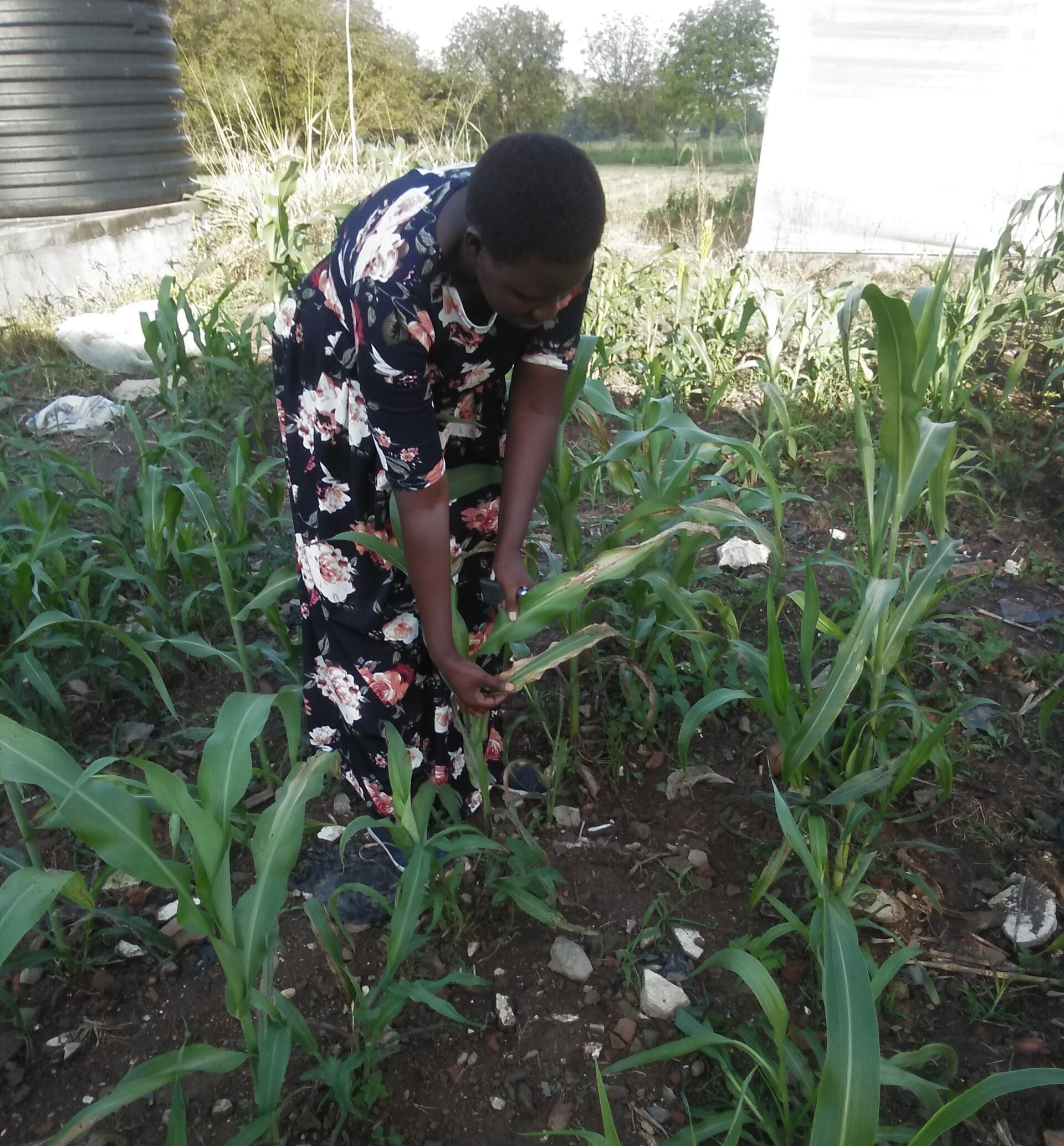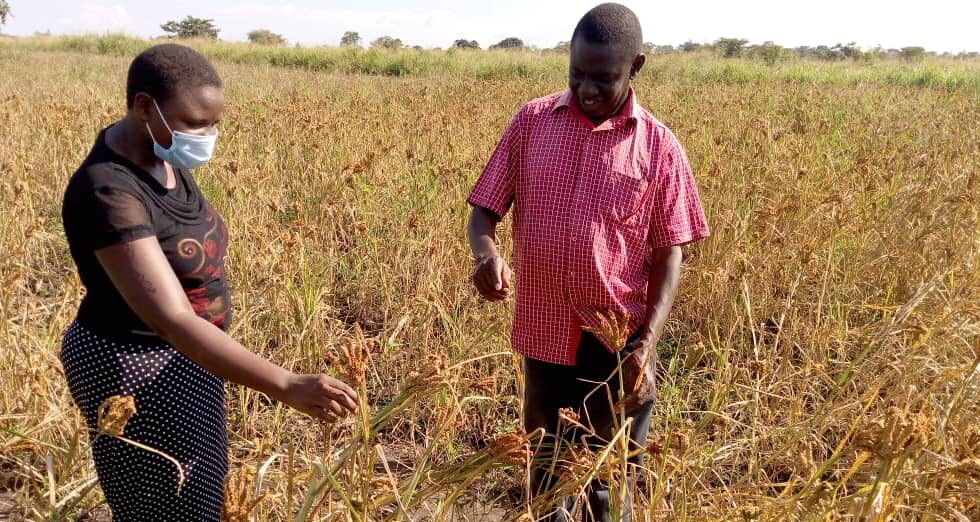For generations farmers in Uganda knew that finger millet would be the backbone of their crop cycles. Government regulations required farmers to grow the herbaceous plant as an essential crop for food security. But over time, as government mandates eased, younger farmers especially turned away from the cereal due to the labor-intensive process needed, including planting and weeding, to mill and prepare the grain for market.
Scientists in East Africa saw an opportunity. By breeding improved varieties that are less intensive for farmers, they recognized that they might boost adoption of a crop with huge potential nutritional and economic security to smallholder farmers across the region.
That’s the goal of the Center of Innovation for Finger Millet and Sorghum (CIFMS), launched in late 2020 with support from the Feed the Future Innovation Lab for Crop Improvement. Scientists from CIFMS are working to develop new varieties of both finger millet and sorghum that can stand up to pests and diseases that threaten food security in Uganda, Tanzania and Kenya.
Uganda, like much of East Africa, is heavily dependent on agriculture. Eighty percent of the rural population works in the agricultural sector, feeding their families and selling what they can, yet one third of children in Uganda are stunted and nearly half are anemic. “For me, agriculture is at the center of everything,” said Scovia Adikini, principal scientist of CIFMS and plant breeder at the National Semi Arid Resources Research Institute (NaSARRI).
“You can survive with agriculture, even if you have nothing else. I do this work because I want to improve the lives of those who are predominantly defined by agriculture.”
By focusing on finger millet and sorghum, CIFMS offers hope for improved nutrition for the millions who depend on the crops while boosting resiliency of small farms.

Above: Farmers participate in a field during NaSARRI trials. Photo provided by Scovia Adikini.
Prioritizing youth and gender in the process
Aside from encouraging rural youth to re-engage with agricultural practices and the production of finger millet, Adikini also hopes that CIFMS will motivate young scientists. “Looking back on crop sciences in Uganda, there has not been a great amount of expertise in-country that can train the next generation of plant breeders,” Adikini said. “This center offers the opportunity to work with students and young scientists, encourage the sustainability of our research institutions and boost crop sciences research in Uganda.”
Adversity is something Adkini knows how to overcome.
“I was the first girl student to study science in my school,” she said. “Everyone encouraged me to try something else, especially since my school did not have any science teachers or resources.”
With a deep interest in biology, chemistry and physics in high school, Adikini’s dream was to become a scientist. “Many people told me I would fail, but I did not let that stop me.”
As a young scientist she diligently followed her dreams, despite the challenges that stood in her way, often taking breaks between years at school to raise funds for educational fees. Adikini’s passion for science led her to the crop sciences, recognizing that if everyone could be fed well, they would be healthy, and if they could live off of agriculture, they would have job stability.

”“All that I had achieved in life was because of my family’s farm. For me, working in agriculture means making a difference in the lives of people and my fellow farming community.”
In addition to encouraging the participation of young farmers and scientists, CIFMS is also prioritizing gender equity in their work. “We want to ensure that all aspects of gender are considered — from our team at CIFMS to the farming communities that we serve.” Both men, women and youth will have equal opportunity in area of capacity development. CIFMS wants to see the lives of men and women in their communities change from subsistence to commercial approach of farming where they are able to withstand shock.
Breeding for a better future
Many challenges line the road to food security, but Adikini’s team is ready to jump in to develop new tools, technologies and methods that will alleviate hunger through resilient varieties of finger millet and sorghum. “We are excited to better understand the market and value chain; to characterize, genotype and phenotype germplasm; to capture data storage, analysis and the breeding chain, and much more,” Adikini said.
Adikini is poised to lead CIFMS with hope for a better future. When asked what advice she would give to new scientists, she shares “Have a dream. As a young breeder, you don’t have much, but you can have a dream.”
Regional partners are united to improve food security in East Africa

Uganda
National Semi arid Resources Research Institute (NaSARRI)
Kenya
Kenya Agricultural and Livestock Research Organization
Tanzania
Tanzania Agriculture Research Institute




